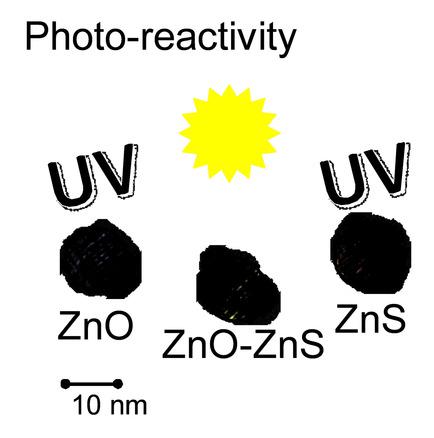当前位置:
X-MOL 学术
›
ChemistrySelect
›
论文详情
Our official English website, www.x-mol.net, welcomes your feedback! (Note: you will need to create a separate account there.)
Towards Visible LED Illumination: ZnO‐ZnS Nanocomposite Particles
ChemistrySelect ( IF 2.1 ) Pub Date : 2020-01-21 , DOI: 10.1002/slct.201904699 Michael Schmitt 1 , Celine Dietlin 2 , Jacques Lalevée 3
ChemistrySelect ( IF 2.1 ) Pub Date : 2020-01-21 , DOI: 10.1002/slct.201904699 Michael Schmitt 1 , Celine Dietlin 2 , Jacques Lalevée 3
Affiliation

|
Nowadays photo semiconductors such as ZnO are one of the driving forces of humanity towards economically and ecological safe life. Such semiconductors are used in solar applications and for light emission but also multiple investigations using the material as photocatalysts (water‐splitting), or as photo initiators were published. The combination of the inorganic material with an organic matrix leads to possible interesting hybrid materials. One drawback for ZnO and other photo semiconductors is the short UV wavelength (in the UV−range) which is necessary to photoactivation. We will present the possibility of modified ZnS‐ZnO nanocomposites being reactive towards visible light for example 406 nm LED illumination. Therefore, the particles are used as initiators for free radical polymerization. The simply to handle experimental preparation procedure of the sulphur containing ≈10 nm particles is described in this work for the first time.
中文翻译:

朝向可见光LED照明:ZnO-ZnS纳米复合颗粒
如今,诸如ZnO的光半导体是人类实现经济和生态安全生活的驱动力之一。这类半导体用于太阳能应用和发光,但也已发表了使用该材料作为光催化剂(水分解)或光引发剂的多项研究。无机材料与有机基质的组合导致可能令人感兴趣的杂化材料。ZnO和其他光半导体的一个缺点是光激活所需的短UV波长(在UV范围内)。我们将介绍改性的ZnS-ZnO纳米复合材料对可见光具有反应性的可能性,例如406 nm LED照明。因此,该颗粒用作自由基聚合的引发剂。
更新日期:2020-01-22
中文翻译:

朝向可见光LED照明:ZnO-ZnS纳米复合颗粒
如今,诸如ZnO的光半导体是人类实现经济和生态安全生活的驱动力之一。这类半导体用于太阳能应用和发光,但也已发表了使用该材料作为光催化剂(水分解)或光引发剂的多项研究。无机材料与有机基质的组合导致可能令人感兴趣的杂化材料。ZnO和其他光半导体的一个缺点是光激活所需的短UV波长(在UV范围内)。我们将介绍改性的ZnS-ZnO纳米复合材料对可见光具有反应性的可能性,例如406 nm LED照明。因此,该颗粒用作自由基聚合的引发剂。


























 京公网安备 11010802027423号
京公网安备 11010802027423号